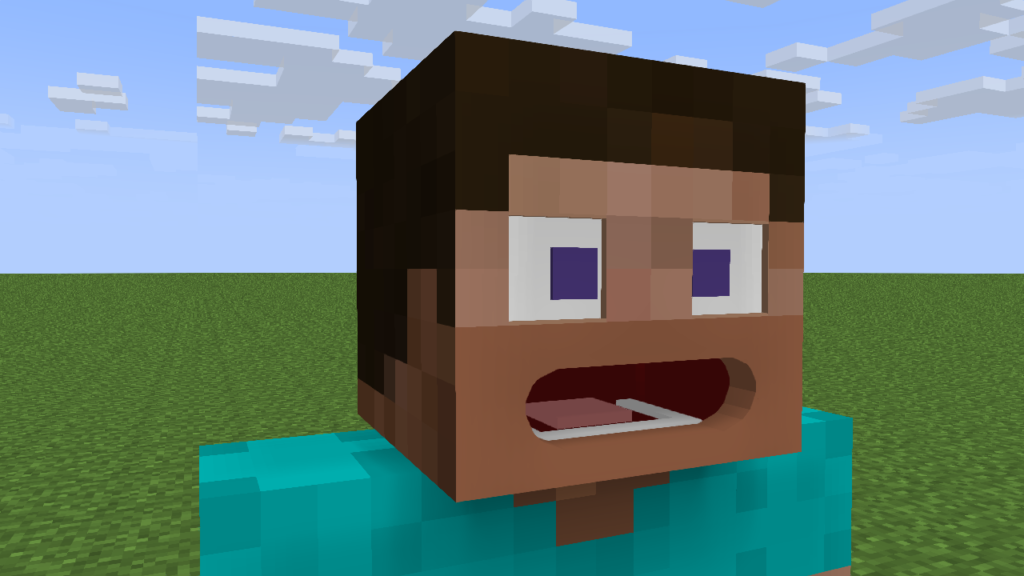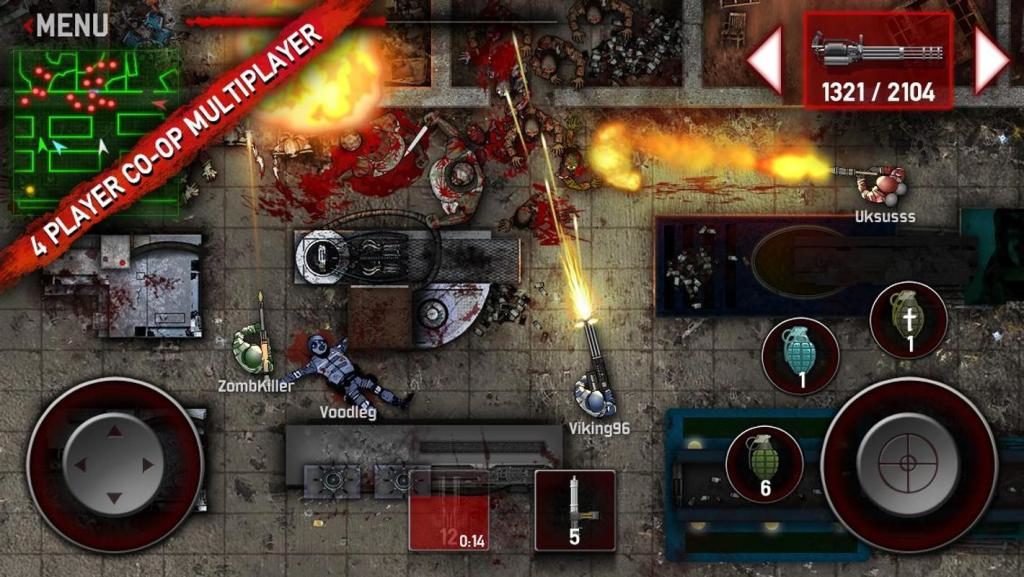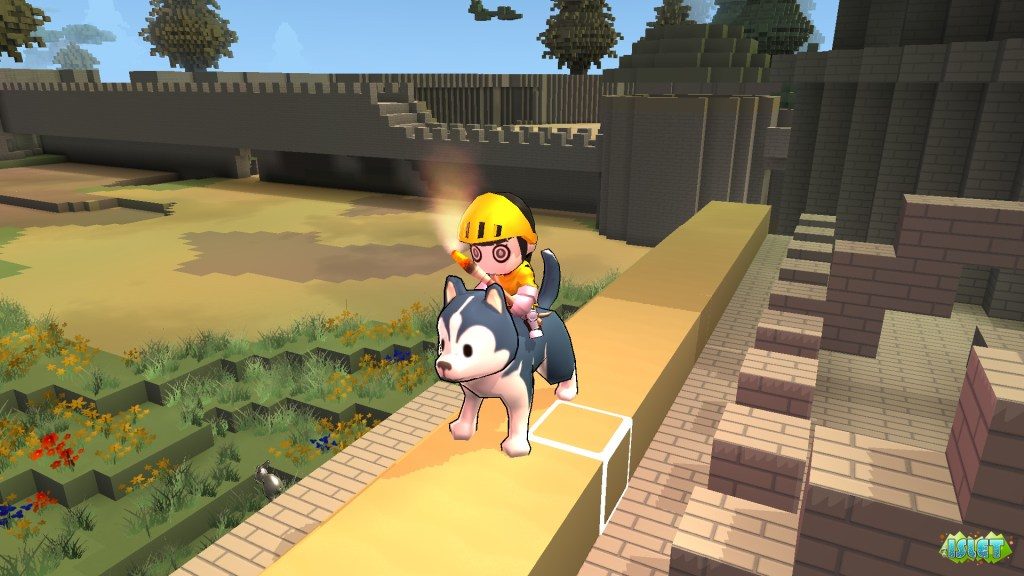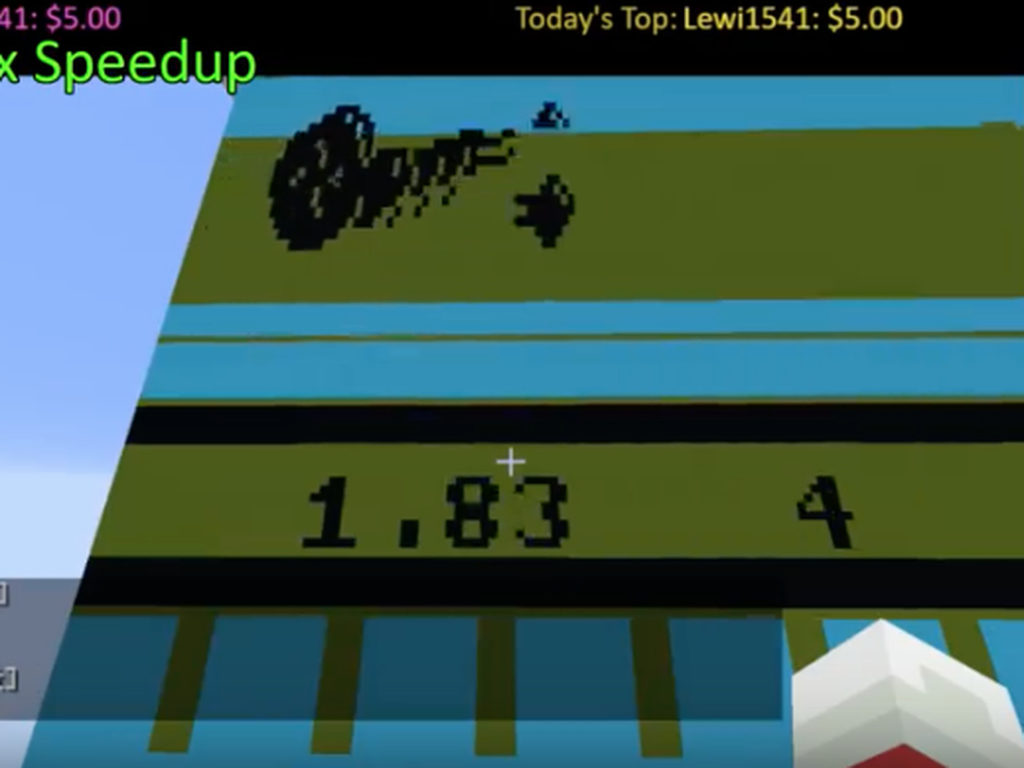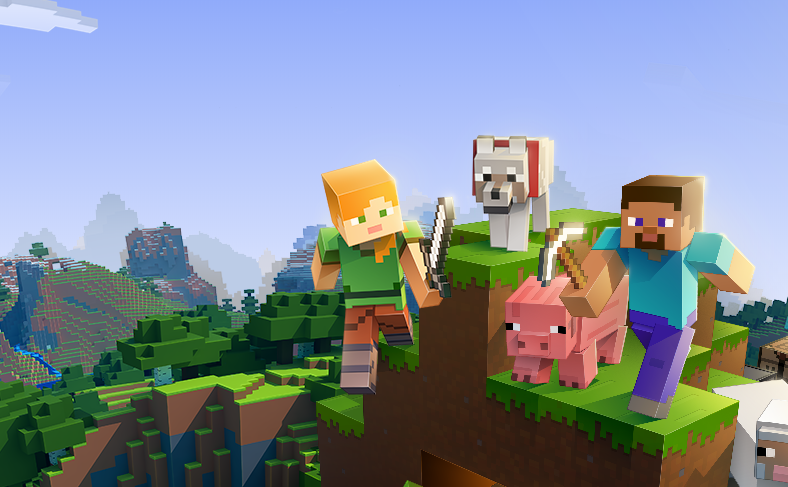Computer Science Curriculum From Minecraft
Teaching Computer Science at school just got easier as Microsoft is making a 30-hour curriculum, targeted at students in the age range 11 to 16, available as a free download.
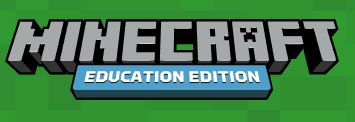
The curriculum is based on Minecraft Education Edition, a version that offers special features for educators, and Microsoft MakeCode, a block- and JavaScript-programming editor as means for teaching the basics of coding and computational thinking skills.
The course is comprised of 10 units with each focusing on specific computer science concepts and programming skills. Teaching all units and lessons will require approximately 30 hours of instruction, with each unit including 1-4 lessons of approximately 45-60 minutes each.
The lessons are comprised of activities that introduce core CS concepts and give hands-on coding experience, as well as a number of independent projects suitable for applying the newly gained skills, and assessments for testing the knowledge and skill development acquired.
Many kids are already familiar with the world of Minecraft since it’s a very popular collaborative game in which characters survive by performing tasks such as chopping, hunting or mining.This curriculum requires students to understand the merits of writing code to automate such tasks using the core concepts of computational thinking.
So by the end of the course students are expected to be able to:
- Change their Minecraft world through coding in Microsoft MakeCode.
- Describe and apply the following programming concepts:
Events
Coordinates
Variables
Conditionals
Functions and parameters
Iteration
Arrays
Artificial intelligence - Synthesize the concepts in a new, creative ways through self-directed coding projects.
The curriculum is well structured and addresses the probable inexperience of teachers who have never taught computer science before but nevertheless want to incorporate the CS into their curriculum, regardless of their subject area.
For example the guidance, backed by the appropriate material, given to educators is as as clear cut as:
Introduce the concept of computer science
Ask students: What is computer science?
Then share:
· The study of what machines can do for us.
· Includes learning how to create new software, solving computing problems, and inventing new ways to use technology.
· A very large subject that can be difficult for even computer scientists to define.
Ask students: Why is it important? How does it help us?
Then share:
· It’s changing everything about the way we live and work.
· It’s for everyone, not just for computer programmers.
· It teaches important skills, like creativity, problem solving, critical and flexible thinking, and working with others.
· Those skills and knowledge are important for successful jobs and careers.
or
Coding with Microsoft MakeCode
Ask students: What is coding?
Then share:
· Code gives instructions to a computer to do something.
· A computer can be a laptop, tablet, smart phone, or any kind of computer. Even robots.
· Coding and computer programming mean the same thing.
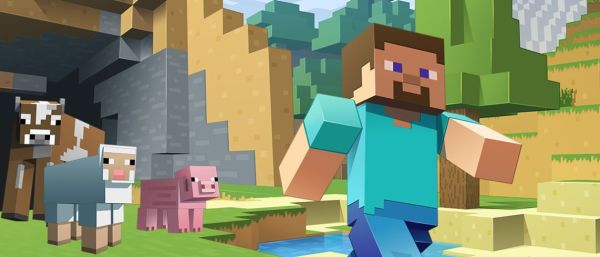
The Units in detail:
Unit 1: Introduction
· Describe computer science and coding and its importance
· Learn to play and maneuver in Minecraft: Education Edition
· Understand block programming in Microsoft MakeCode
· Change your Minecraft world through coding
Unit 2: Events
Lesson A: Introduction to events
Lesson B: Coding with events
Lesson C: Linking events
Lesson D: Get creative with events
Unit 3: Coordinates
Lesson A: Introduction to coordinates
Lesson B: Coding with coordinates
Lesson C: Automating actions with coordinates
Lesson D: Get creative with coordinates
Unit 4: Variables
Lesson A: Introduction to variables
Lesson B: Coding with variables
Lesson C: Combining variables
Lesson D: Get creative with variables
Unit 5: Conditionals
Lesson A: Introduction to conditionals
Lesson B: Coding with conditionals
Lesson C: Debug problem code with conditionals
Lesson D: Get creative with conditionals
Unit 6: Functions
Lesson A: Introduction to functions
Lesson B: Coding with functions
Lesson C: Building on functions
Lesson D: Get creative with functions
Unit 7: Iteration
Lesson A: Introduction to iteration
Lesson B: Coding with iteration
Lesson C: Debugging with iteration
Lesson D: Get creative with iteration
Unit 8: Arrays
Lesson A: Introduction to arrays
Lesson B: Coding with arrays
Lesson C: Building on arrays
Lesson D: Get creative with arrays
Unit 9: Artificial intelligence
Lesson A: Introduction to artificial intelligence
Lesson B: Coding an intelligent agent
Lesson C: Get creative with artificial intelligence
Unit 10: Final independent project
· Design an original creative project to program four tools for a survival backpack to help you in a Minecraft world
· Demonstrate your learned coding skills and apply them in a new way
· Validate your approach to the project, including beta testing and analysis of code to debug and problem solve
Of course, the most eye-catching of all has to be Unit 9 on Artificial Intelligence which introduces the concept of crafting programs that mimic human intelligence, but also revolves around the ethical questions surrounding it.Here students will be creating AI rules for winning a tic-tac-toe game as well as building Intelligent Agents who navigate mazes and chop wood on their own.
The final project is about creating several sub-projects which address the needs that your Agent is going to have to satisfy in order to survive the game, and which can be solved with code. For example, to satisfy your character’s requirements for lots of paper you can code a sugar cane farm for him to harvest. Simiarly for building better tools you can code an iron-finder.
In all, this curriculum offers a first class opportunity for educators around the world to introduce their pupils to the concepts of computer science and critical thinking in order to prepare them for the workplace of the future.
Minecraft’s players can wall run thanks to a bug in the latest update
A bug in Minecraft’s latest update has given players the ability to parkour.
This week’s snapshot update appears to have a bug that allows players to wall run.
Redditor NatalieZem posted a video of the bug in action (via Kotaku), explaining how this feat of athleticism is possible.
“Just for context, this isn’t a trick or a prank or anything. In the recent snapshot, you can’t jump while pressing against a block. And apparently not being able to raise your elevation also means you can’t lower it either. Try it for yourself: All you need to do is stay sprinting into the wall and you can move along it.”
A number of players are enjoying the unintended feature, and want to see it implemented properly in the game.
Last month’s update saw the addition of pandas and new-and-improved cats.
And later this year, PC players can look forward to the release of Minecraft: Dungeons, announced at MineCon Earth 2018.
SAS: Zombie Assault 3 seems to be making a comeback
SAS: Zombie Assault 3 appears to be making a comeback, according to the AndroidGaming Reddit.
The game has been dormant for a while but ninjakiwi has breathed new life into it by switching the servers back on.
SAS: Zombie Assault 3 is an old school top down zombie shooter
It seems like the latest entry in the franchise, SAS: Zombie Assault 4, didn’t prove as popular.
If you haven’t heard of this yet, it’s a top down multiplayer shooter by the creators of Bloons.
You’ll battle hordes of zombies across a bunch of maps with friends, ranking up, and unlocking new weapons and perks as you go.
So head on over to Google Play and check out this golden oldie. It’s nice to see an older game getting some love in this fast-moving world.
Islet Online is the Minecraft MMO we didn’t realise we needed
Here’s a nice little treat to liven up your Friday: Android just got its own mobile-exclusive Minecraft-style MMO in Islet Online.
It’s not a complete exclusive though, as its’ available on Steam too. Still, any instance where we get a game and iOS doesn’t is a cause for celebration.
Islet Online is out right now on Android
It’s basically Minecraft but entirely online. You’ll wander around digging up blocks and stacking them to create tools, furniture, and other bits.
You can create a home and decorate it, catch animals and ride them, and even fly around the world.
It sounds like a lot of crazy fun that we can’t wait to check out. You can grab it right now on Google Play and link up your PC account if you’ve played it there before.
At Science Museum, 100 playable video games, Pac-Man to Minecraft, no tokens needed
Could the museum exhibit “Game Changer” be the game changer for the gamer in your life?
The release of “Game Changers” will be Friday at the Science Museum of Minnesota — and it will also be open, along with the rest of the museum, on Presidents Day on Monday (a day that many of our gamers are off from school).
The exhibit, created and curated by a museum in Australia, spans 10,000 square feet. It goes into the history and evolution of video games, and includes more than 100 playable games. So it’s an arcade as well as an exhibit. No tokens are needed, because the exhibit and its features are included in the price of regular admission to the museum.
The games people will be able to play in the exhibit include Asteroids, Pac-Man, Angry Birds, Space Invaders, Sonic the Hedgehog, Fruit Ninja, Diablo, Minecraft and Rock Band 3.
It’s not just for gamers, though; you could say that the exhibit is rated “E” for everyone.
“It’s really multigenerational,” says Kim Ramsden, museum spokeswoman. “We’ve heard from other museums who have hosted it that adults will go in and feel excited to find the games they knew as a kid — they will be excited to show it to their kids; and then, by the end of the exhibit, kids will be able to show their parents the new games, games that kids are playing today. So it’s a really social experience.”
These types of games — played on clunky machines back in the early days and played on devices as small as our phones today — really have been game changers for how kids play, but the exhibit isn’t merely an arcade. Behind every game, after all, there are people and processes to educate and inspire us.
“It’s fascinating to learn about game designers,” Ramsden says, “their process and who they are.”
Their creations are teaching tools.
“In the scientific process, we talk about failure, we talk about getting up again after failing at something,” Ramsden says. “In video games, that happens a lot as you work through the levels.”
In that way, gamers are developing problem-solving skills and the art of collaboration as they play Minecraft or other popular games.
“There are parallels to STEM (science, technology, engineering and mathematics) education,” says Ramsden.
We can also dance, thanks to Dance Central, an example of how gamers don’t always need a controller anymore.
“It’s a lot of fun,” Ramsden says.
Game Changers
Where: Science Museum of Minnesota, 120 W. Kellogg Blvd., St. Paul
When: Opens Feb. 15 and runs through May 5.
Exhibit: Get the gamers in your life into the museum with this special exhibit inside the museum’s U.S. Bank Great Hall that takes visitors on an interactive journey into the history and the future of video games — including more than 100 playable games as well as rare concept artwork and interviews with designers. The exhibit is divided into three sections: Arcade Heroes (think the arcade era and beloved games like Pac-Man); Game Changers (think contemporary designers and how their games, such as SimCity, took gaming to the next level); and Indies (a look at today’s independent game designers and phenomena like Angry Birds, Minecraft and Fruit Ninja).
Admission: Included with regular Science Museum exhibit gallery admission ($19.95 for adults and $14.95 for kids ages 4 to 12 and seniors).
Kim Possible deserves a place among DCOM classics
Let’s get one thing out of the way. Disney Channel’s original Kim Possible movie is just that: a Disney Channel Original Movie. We can’t compare it to theatrical live-action versions of animated Disney films; it’s made for TV, and based on a TV show. Adjust your expectations about live-action Kim Possible accordingly.
That being said, this version of Kim Possible, a classic Disney cartoon from the mid-2000s, keeps the true spirit of the DCOMs many of us grew up with — Wendy Wu Homecoming Warrior, Halloweentown, and Zenon: Girl of the 21st Century among them. Kim Possible is campy and hammers in its message with the subtlety of a sledgehammer, but that’s not a critique. It just means that Kim Possible is, like most in the DCOM canon, a fun movie, and little else.
[Ed. note: This article contains slight spoilers for Disney Channel’s Kim Possible.]
Kim Possible bears a weighty legacy. The animated series ran from 2002 to 2007 and was a staple of many childhoods. Featuring a crime-fighting teenager and her best friend (and his naked mole rat) as they take on evildoers and the perils of high school, the show received high praise. Unlike many other action comedies at the time, Kim Possible centered around a capable heroine, and many boys and girls alike watched the show. Because it is such a beloved childhood show, the nostalgia value is high.
In Kim Possible the DCOM — just like Kim Possible the Disney Channel Original Series — Kim (Sadie Stanley) lives a double life. By day, she’s a high school girl; after school, she’s either playing soccer or taking out bad guys. In the movie, Kim’s greatest foe, Dr. Drakken (Todd Stashwick), still wants nothing more than to defeat her once and for all. Because Kim is just so good at everything, he decides that he needs to steal the spark of what makes her Kim.
Yes, Drakken wants to nerf Kim Possible. He intends to do this literally, as if Kim’s “spark” is something that can actually be obtained.
Meanwhile, at the core of the movie, Kim deals with a struggle many millennials who grew up with the show can relate to: After being accomplished and the best at everything she does for most of her life, she faces a sharp turn in high school. At first, it’s that she’s unequipped to deal with the social hierarchy and the demands of her teachers; but when her new best friend, Athena, starts to outshine her in almost every way — including in crime-fighting — Kim has to battle feelings of insecurity and jealousy. The eventual plot twist is predictable, but it shakes the movie up from being more than a full-length, live-action episode.
Relatable as this premise may be to older Kim Possible fans, some seem unable to let go of their long-held visions of a live-action version. When lead actress Sadie Stanley was cast, many reacted negatively, because she didn’t fit the version of Kim that they had cast in their minds. The crown of beloved childhood classic sits heavy on its wearer’s head.
But instead of comparing 2019’s Kim Possible to some impossibly polished fantasy, we must look to the other Disney Channel Original movies. That’s what this is, after all; not a full-fledged remake, but fluffy TV fare.
The set design and special effects of Kim Possible are overdramatic, and could be lifted straight from the cartoon. Different gags grace the marquee of the high school each time it’s shown; Ron’s signature dish, the “naco,” drips with cheesy goodness; Rufus the naked mole rat is just silly enough as to not be jarring. At one point, Kim looks at her old outfit — one that resembles the outfit she wears in the cartoon — and remarks that it always felt a bit “cartoony” to her.
The acting is also all about hamming it up. But as far as the kid cast goes, Sean Giambrone as Ron Stoppable is particularly endearing, bringing his own touch to the quirky character. Sadie Stanley’s Kim might be a little more vulnerable different from the golden-eyed way fans recall her, but if you realize that Kim was a crime-fighting, over-achieving cheerleader, then her Type-A personality and insecurities make sense. The adult cast, which includes Kim’s original voice actor, Christy Carlson Romano, in a small role, also delivers the sometimes-cheesy lines with finesse. And Taylor Ortega, who plays Shego, nails everything about the iconic villainess, from exhausted eyerolls to the sassy comebacks.
The cast of Kim Possible mostly manages to save the movie’s shallow plot from falling totally flat. Despite Stanely and crew’s best efforts, however, there is a lot of misplaced melodrama. Kim realizing that she’s more than her accomplishments, that she can be a good person without being good at everything, would have more impact were it not for the grandiose plot twist in the latter half of the movie.
Though a few plot road bumps persist, Kim Possible manages a heartwarming ending, goofy and endearing characters, and a whole lotta wonderful corniness. It pays acceptable tribute to both the cartoon and the Disney Channel Original Movies that came before it — just as long as you keep in mind that it’s a tribute, and nothing more.
Overwatch gets nine swell action figures — including a huge Reinhardt — from Hasbro
Vox Media has affiliate partnerships. These do not influence editorial content, though Vox Media may earn commissions for products purchased via affiliate links. For more information, see our ethics policy.
Fresh off yesterday’s Fortnite toy reveal, Hasbro today announced an even larger line of Overwatchaction figures, plus other toys coming this year.
The figurine assortment involves nine of Overwatch’s cast, among them a couple of two-packs of related characters and a giant-size fully poseable Reinhardt with a hujungus Barrier Field.
GameStop is offering all of these toys for preorder right now. (They’re linked in the descriptions.) Here’s the lowdown: GRID VIEW
/cdn.vox-cdn.com/uploads/chorus_asset/file/13788827/OVERWATCH_ULTIMATES_SERIES_6_INCH_Figure_Assortment___Tracer_oop__5_.jpg)
• Solo figurines are $19.99 and all are six inches tall. The characters launching in Spring 2019 are Lucio, Sombra, Tracer and Reaper in his Blackwatch Reyes form. GRID VIEW
/cdn.vox-cdn.com/uploads/chorus_asset/file/13788875/OVERWATCH_ULTIMATES_SERIES_6_INCH_DUAL_PACK_Figure_Assortment___Soldier_76___Ana___oop__1_.jpg)
• The two-packs are $39.99 and pair off Phara with Mercy and Soldier 76 with Ana. GRID VIEW
/cdn.vox-cdn.com/uploads/chorus_asset/file/13788918/OVERWATCH_ULTIMATES_SERIES_6_INCH_Figure___Reinhardt_oop__3_.jpg)
• Reinhardt is the same scale at six inches tall, but because he’s so, erm, wide he gets his own $49.99 SKU. He comes with a Barrier Field and Rocket Hammer.
All the action figures are expected in Spring 2019.
Other toys coming this spring include three Microshots mini-dart blasters ($9.99 each) based on Lucio, Mei and Roadhog’s gear and an Overwatch collector’s edition of Monopoly($49.99).
Then, this fall, Hasbro is offering an assortment of $19.99 masks (including Genji and Tracer) just in time for Halloween.
Hasbro says everything will be “available at most major toy retailers nationwide.”
Atari 2600 emulator in Minecraft helps tie a world record — at 1 frame per second
Last year around this time we were talking about Dragster, and how a 35-year-old world record was debunked and the record-holder got banned from high score competitions for life. Well, someone — using an Atari 2600 emulator in freaking Minecraft, of all things — technically tied the legitimate world record. Technically being the best kind of world record, of course.
What’s even funnier is this emulator renders at 1 frame per second. So that means YouTuber SethBling’s blazing fast time of 5.57 took about 15 minutes to complete.
Obviously, the fact the game is so slowed down is a big help, since it allows SethBling to get off the line perfectly, hit his shifts perfectly and nail what is considered the fastest playable time in the game. And he points out that, well, his run conforms to the rules for Dragsterposted on speedrun.com, which specify that in-game time (not real time) is what counts, and allow for runs on emulation — which SethBling notes are usually rendered slower than on native hardware. (Probably not one effing eff ps though.)
For the record, the time of 5.57 is held by 16 players on speedrun.com, six of them not in emulation. SethBling is not on the leaderboard, so it sounds like he hasn’t submitted this performance for review.
The rest of the video shows how the emulator works with a variety of other Atari 2600 games. They’re playable, alright, with the slight qualifier that they are all slower than the molasses in January. But if you’re interested in seeing the Minecraft 2600 emulator all for yourself, SethBling has made the world available here.
This District Rolled Out Minecraft and Teacher Collaboration Skyrocketed
This article is part of the guide Game-Based Learning: Preparing Students for The Future.
When Roanoke County Public Schools gathered educators for their first training in how to teach with Minecraft: Education Edition (M:EE), “you could hear the rumble in the room,” says Jeff Terry, the district’s director of technology. That was early 2018. Today, his district is among the top ten for M:EE usage worldwide.
While Terry was surprised to hear that stat, he was also excited. He says adding M:EE to the district’s robust technology arsenal is helping students master the oft-cited Four Cs of education—critical thinking, communication, collaboration, and creativity.
It’s also helping students become opportunity ready in a state where business is finding it tough to fill technology-focused roles. Just last year, former Virginia Governor Terry McAuliffe said the demand for highly skilled workers in the state far outweighed the number of qualified candidates, with “36,000 cyber jobs” needing to be filled.
Roanoke added Minecraft: Education Edition to the district’s Microsoft campus agreement as a pilot project in 2017; now the software has been rolled out to 14,000 students district-wide. Thanks to a strategic approach to PD and support, teacher collaboration has skyrocketed, kindergartners are coding and students are excited about learning.
EdSurge spoke to Jeff Terry about Roanoke’s game-based learning journey, his team’s tech implementation advice and the buzzing engagement they’ve seen in students and teachers since adopting M:EE.
Kids open up with Minecraft.
EdSurge: Why did you decide to adopt Minecraft: Education Edition?
Jeff Terry: Our goal, at the heart of our strategic framework, is for our students to be introduced to deeper learning—learning that is engaging and purposeful. We also want students to be opportunity ready when it’s time for either college or career. And to do that they need to be able to understand the Four Cs.
We have a tight relationship with the business community here and those are the skills businesses want students to have. And while Roanoke County isn’t a gigantic place by any means, it’s a suburban hub within 500 miles and a lot of areas that need technology employees.
Minecraft is one of those unique products that fits in with developing each one of those Four Cs. It even hits the fifth C we have in Virginia for citizenship.

How does M:EE specifically support the Four Cs?
And the most gratifying piece is that at the end of all these lessons, kids are excited about what they’re learning.
It’s changing our students. Kids open up with Minecraft. On my school tours, I see second- and third-grade students who are not interested in giving a report or reading a book out loud. But when they build a scene from their novel using Minecraft, they are the first ones to get up in front of a projection board and present.
And they’re learning history without even knowing it. Students collaborate to construct pyramids in Minecraft as they study ancient Egypt, for example, and build historically important buildings as they research Cuba and Greece. In a Jamestown Settlement module in Minecraft, they’re building a settlement based on what the colony in Jamestown, Va. would have looked like and what things were available when the first settlers arrived.
Even our kindergarteners are coding. At every level, our students have technological abilities. But they also have people skills—they can collaborate, communicate. They’re gaining important 21st-century skills.
And the most gratifying piece is that at the end of all these lessons, kids are excited about what they’re learning. Not just excited about playing a game—excited about learning.

Adoption and usage are extremely high in your district. How did you achieve that?
. . . Minecraft has greatly increased collaboration amongst our staff.
With all technology programs, the key is not to overlook the need for professional development. We made that mistake when we rolled out our 1:1 laptop program 16 years ago. Getting a laptop for every kid was one thing, but having the teachers know what that meant was another.
So for Minecraft, we started with a pilot program. We brought in our 15 Instructional Technology Resource Teachers (ITRTs)—as well as another group of high flying teachers—to have official Minecraft PD from Microsoft.
We also included our instructional supervisors in that training so they could see how Minecraft works in the classroom, how it can help them meet their standards measurements and how engaging it is. We want technology to be built into our instructional program.
When we started the official training you could hear the rumble in the room. Teachers were excited to see how many different ways they could use it and share ideas. Since that day, Minecraft has greatly increased collaboration amongst our staff.
How do you support teachers and ensure continued use?
For continued support, we use a co-teaching model with teachers. An ITRT plans a lesson that meets a teacher’s curriculum, and then the two of them implement the lesson. As the teacher becomes more confident with Minecraft, the ITRT will no longer need to always be in the classroom.
Lessons Created or Adapted by Roanoke Educators
- Area and Volume with Minecraft Edu
- Making Music in Minecraft Education Edition
- Animal and Plant Cell Tours in Minecraft Edu
- Building Jamestown
Minecraft: Education Edition also has a community of educators who submit vetted lessons. Teachers can search by subject and find lesson ideas, and new ideas are being rolled out all the time. There are also tutorials—for subjects such as chemistry and coding—so our teachers can try new things out with ease. The key really is supporting and training teachers.
And now that it’s on every one of our laptops, it’s being used by many of our students daily. About 8000 students in our middle and high school 1:1 take-home laptop program use Minecraft. And in our elementary schools, every classroom has five laptops and Minecraft is being used there as well.
It’s built into our program so deeply that it would be greatly missed if it was not here.
Denmark once replicated their entire country in Minecraft: It was promptly invaded
Back in 2014, the Danish government had the brilliant idea of recreating the whole country in Minecraft for educational purposes. But just a few weeks after the launch of the initiative, cybervandals had already raided it in the name of America.
The Danish Geodata Agency had the marvellous idea of building a virtual version of the entire country of Denmark at a 1:1 scale. One of the biggest Minecraft creations ever made, the government agency built the model based on official topographical data so people could walk around the whole country, free to even visit their own address. Four billion bricks and one terabyte of data, the whole thing was a thing of wonder.
Well, it was nice while it lasted.
The use of dynamite was banned on the Danish server to prevent the structures from being blown up, but users managed to find a workaround and discovered dynamite could be hidden in mining carts.
Cyberpirates started raiding the place, blowing apart small portions of the map and erecting US flags and “America” signs in red, white and blue.


Views of virtual Denmark after being “Americanised” by players.
“I americanlized [sic] the place a bit,” wrote one user on fan site minecraftforum.net. Another said, “Not enough ‘Murica, and did you find the oil?”
The Danish Geodata Agency repaired the damage and described the incident as part of Minecraft’s “nature of play”.
“It was the players who cleaned up the damage, replacing it with green grass and flowers the following morning,” Chris Hammeken, chief press officer at the Danish Geodata Agency, told the BBC.

